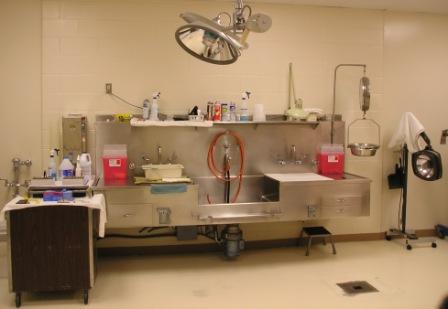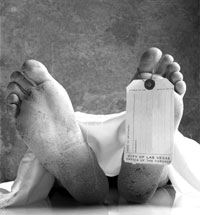Determining The Time of Death
When the heart stops beating, gravity pulls blood to the lowest point in the body. Blood pooling in those low areas stain the surrounding tissue giving the appearance of bruising. This staining of tissue is called livor mortis, or lividity. For example, a victim lying flat on his back when he dies exhibits lividity on his back, buttocks, and the back of his legs. The same is true on the front of the body, if the victim is found lying face down.
Livor Mortis (lividity) can help investigators determine the time of death. The staining of tissue normally begins within the first two hours after death. The process reaches it’s full peak in eight to twelve hours.
If the victim is moved during the first six hours after death the purplish discoloration can shift, causing the new, lowest portion of the body to exhibit lividity.
After a period of six to eight hours after death, lividity becomes totally fixed. Moving the body after eight hours will not change the patterns of discoloration. Therefore, investigators know a body found lying face down with lividity on the back, has been moved.
Rookie officers have often confused lividity with bruising caused by fighting.
Remember, ambient air temperature is always a factor in determining the TOD (time of death). A hot climate can accelerate lividity, while a colder air temperature can slow it down considerably.
Rigor Mortis is the stiffening of muscles after death. The muscle stiffening (hence the use of the term, stiff) is caused by the loss of adenosine triphosphate (ATP) from the muscle tissue. Without ATP, the muscles can no longer function normally, and begin to contract and stiffen.
Rigor mortis begins in the smaller muscles of the face and neck in about two hours after death. The process then moves downward from the head to the feet. The body becomes completely stiff in approximately eight to twelve hours.
Bodies remain rigid (the rigid stage of rigor mortis) for approximately eighteen hours, at which time the process begins to reverse itself in the exact same order – small muscles first, followed by the larger ones, moving from head to toe.
In approximately twelve hours the body returns to a flaccid state.
Again, like livor mortis, air temperature is a factor that can accelerate or slow down rigor mortis. Certain poisons and illnesses can also affect rigor mortis.
Determing TOD using rigor mortis is not an exact science.



